Arequipa, known as the White City due to buildings constructed of white volcanic sillar rock, was founded in 1540 in a valley surrounded by three volcanoes.
Despite being Peru’s second-largest city, with a population of 840,000, Arequipa’s historic center feels like a small friendly town. The altitude, around 7,800 feet, slowed me down, but there was nothing to rush for. While there are a number of free walking tours available, the guide didn’t show up for the one I tried to attend. Instead, I took my time wandering the cobbled streets of this UNESCO World Heritage site. Here are a few of my favorite discoveries.
Chachani, Misti and Pichu Pichu
The suburb of Yanahuara, around a 40-minute walk (1.25 miles) from Arequipa’s historic center, provides excellent views of the Chachani, Misti, and Pichu Pichu volcanoes. From the viewpoint, a terrace with arches built across it, I overlooked the city from the spires of the Arequipa Cathedral to the Misti Volcano. To the right of Misti stands Pichu Pichu and to the left, Chachani. Further left from the viewpoint and running off the square is a narrow cobbled street of white buildings, black lanterns, and flowerpots of red geraniums on their walls. Picturesque.
Santa Catalina MonasterY
Back in the historic center, Santa Catalina Monastery is almost a city within itself. Today, it is home to twenty nuns. At its founding in 1579, it held many more. The monastery is hidden behind an imposing grey stone wall running the length of a city block. An explosion of color lies inside. Burnt-orange walls line narrow cobbled alleys named after Spanish towns. White buildings remind me of those on the Greek islands. Orange trees grow in the vicinity of Wedgewood-blue cloisters. There are also dim, stone-walled, austere cells where nuns once lived. Ancient kitchens bear blackened walls and beams from centuries of smoke from wood-fired ovens. It’s easy to spend two hours in this 5-acre sanctuary. Afterward, the modern world is a shock compared to the serenity inside.
Plaza de Armas
Along Calle Santa Catalina, I pass upmarket stores selling alpaca wool garments and a chocolate café, Chaqchao Chocolates. Drop-in for a tasting or learn about Peruvian cacao during their two-and-a-half-hour bean-to-bar chocolate class.
Further up the road is the Plaza de Armas. The main square looks tropical with palm trees and gardens. Park benches provide somewhere to rest. The white Basilica Cathedral, rebuilt in the late 1800s after an earthquake destroyed the previous one, stretches an entire side of the plaza. Given its impressive size, it’s surprising to find a quite simple interior. The other three sides of the plaza house two-storied cloister-like archways fronting businesses. It’s a place to find souvenir shops, a supermarket, the tourist information office, and even a casino. Restaurants on the upper story have outdoor areas with views over the square.
Museum of the Arequipa Ice Maiden
Down the road from the Plaza de Armas on Calle La Merced is the Museo Santuarios Andinos, home of Juanita, the Ice Maiden. Discovered in glacial ice on the nearby Ampato Volcano in 1995, Juanita now resides in an ice incubator. She wears the dress and decorative red-and-white shawl she was sacrificed in over 500 years ago. In fetal position, her mouth open as if screaming, she remains in perfect condition, her dark skin and black hair intact. Her body is the last exhibit at the end of the museum. A guided tour starts with a film explaining her journey up the volcano and the sacrificial ceremony that likely took place. The museum includes linens, ceramic, gold, and copper ornaments, and figurines found at nearby burial sites. It’s a moving experience.
Mercado San Camilo
Next, I wandered the well-worn, stone-slab footpaths further from the square. Modern, plain, concrete buildings stand alongside colonial beauties with wrought-iron balconies. There are a number of churches, some simple, some with intricately carved facades. Most have their tall, wooden doors shut tight. Churches in Arequipa are normally open from 9 am to 12 noon. Some reopen from 3 pm to 6 pm.
The main farmer’s market, Mercado San Camilo, lies in a warehouse-type building running for several blocks on the edge of the historic center. Fruit and vegetable piles, some towering maybe 10 feet, wheels of cheese, endless cuts of meat, abundant flowers and clothing await customers. Morning is the best time to visit. There were lots of empty stalls around 3 pm when I arrived.
Fundo el Fierro
At the other end of town, next door to the 16th Century Iglesia de San Francisco, is an artisans market. Lots of alpaca wool garments, bags, t-shirts, and traditional ceramics and jewelry are for sale. It’s the best place in town to find gifts and memorabilia to take home.
San Lazaro
Continue on from Fundo el Fierro, crossing Calle Puente Grau and head into Calle Tejada. Known as San Lazaro, this neighborhood consists of narrow cobbled roads and alleys lined with simple whitewashed homes opening straight onto the street. It is picturesque with old-fashioned lanterns and pots of geraniums hanging from buildings.
Finally, finish the day off with queso helado. It’s an Arequipan specialty that tastes like cheesecake with cinnamon sprinkled on top. Delicious!

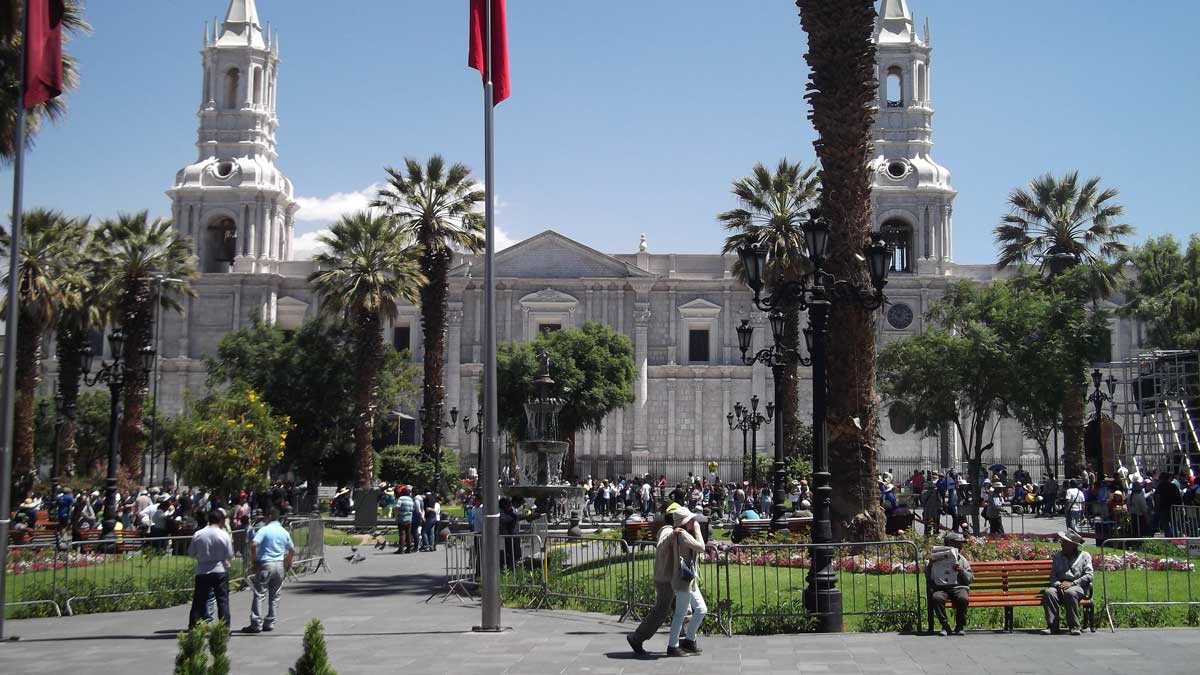
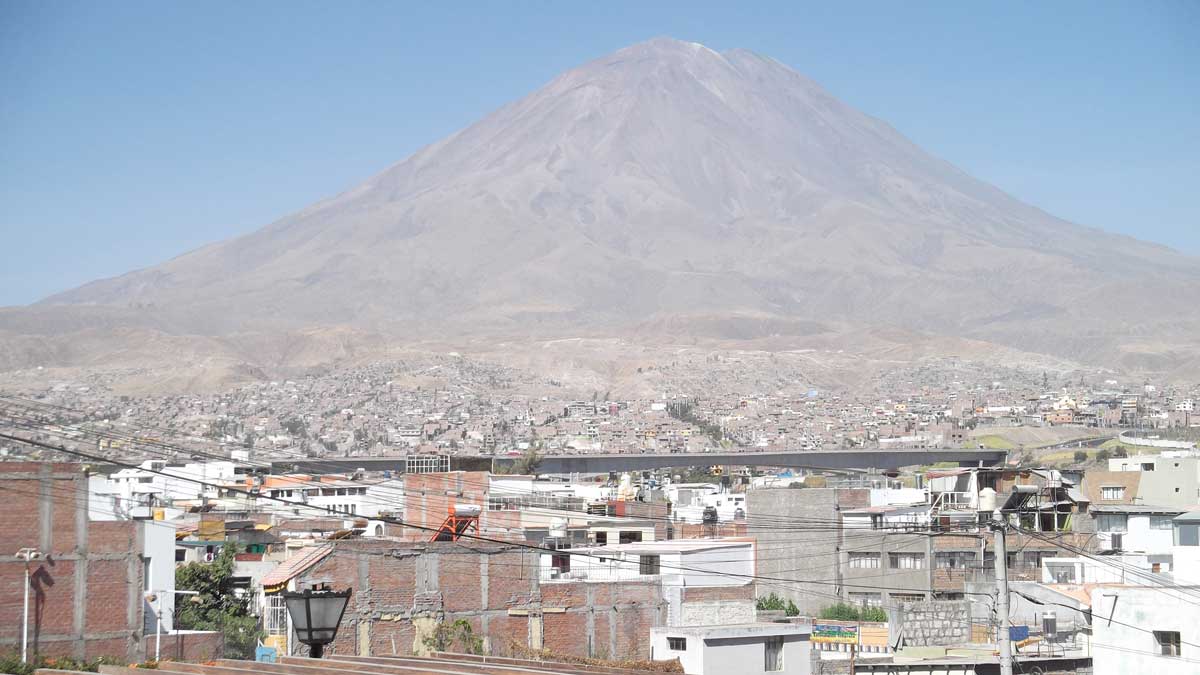

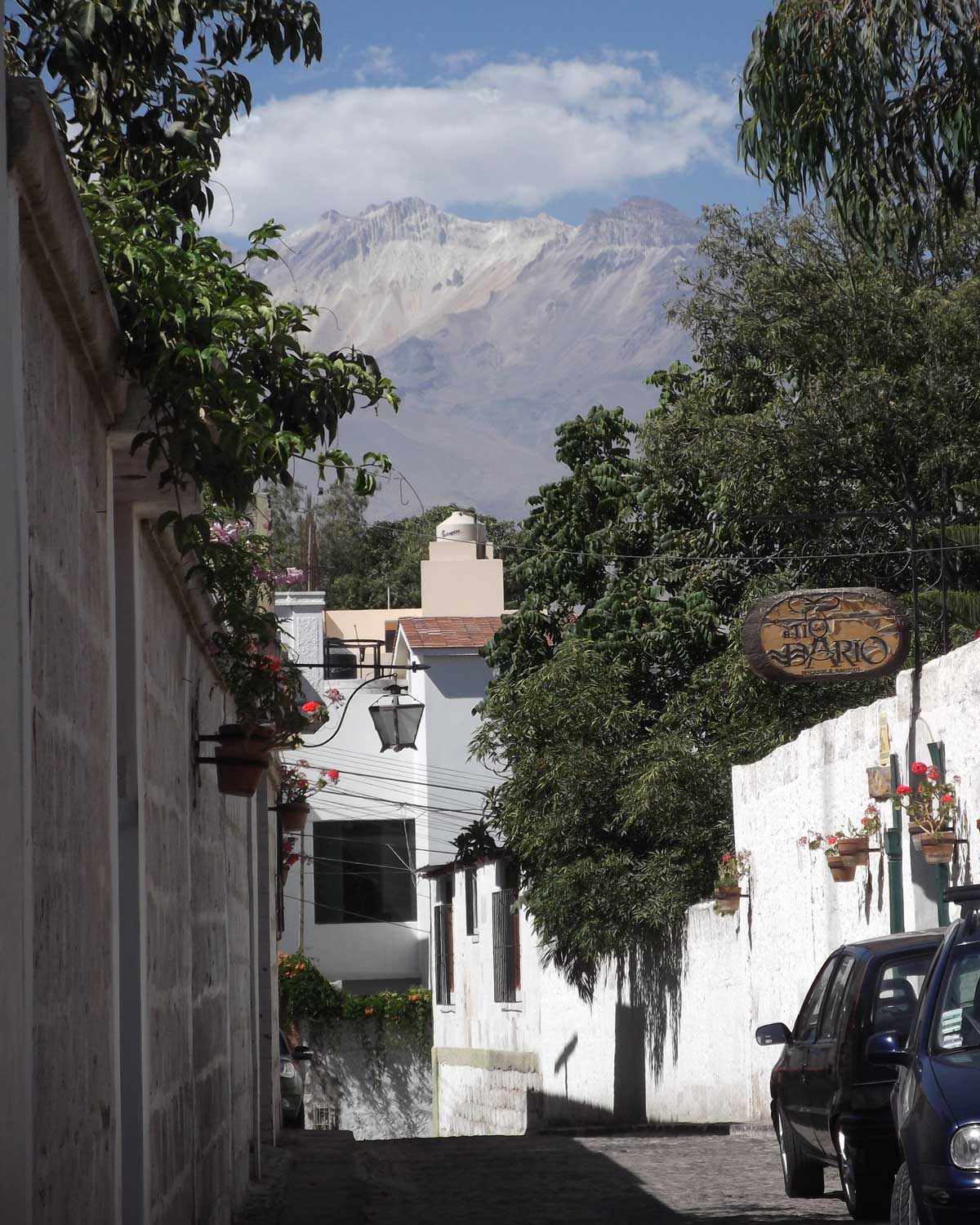
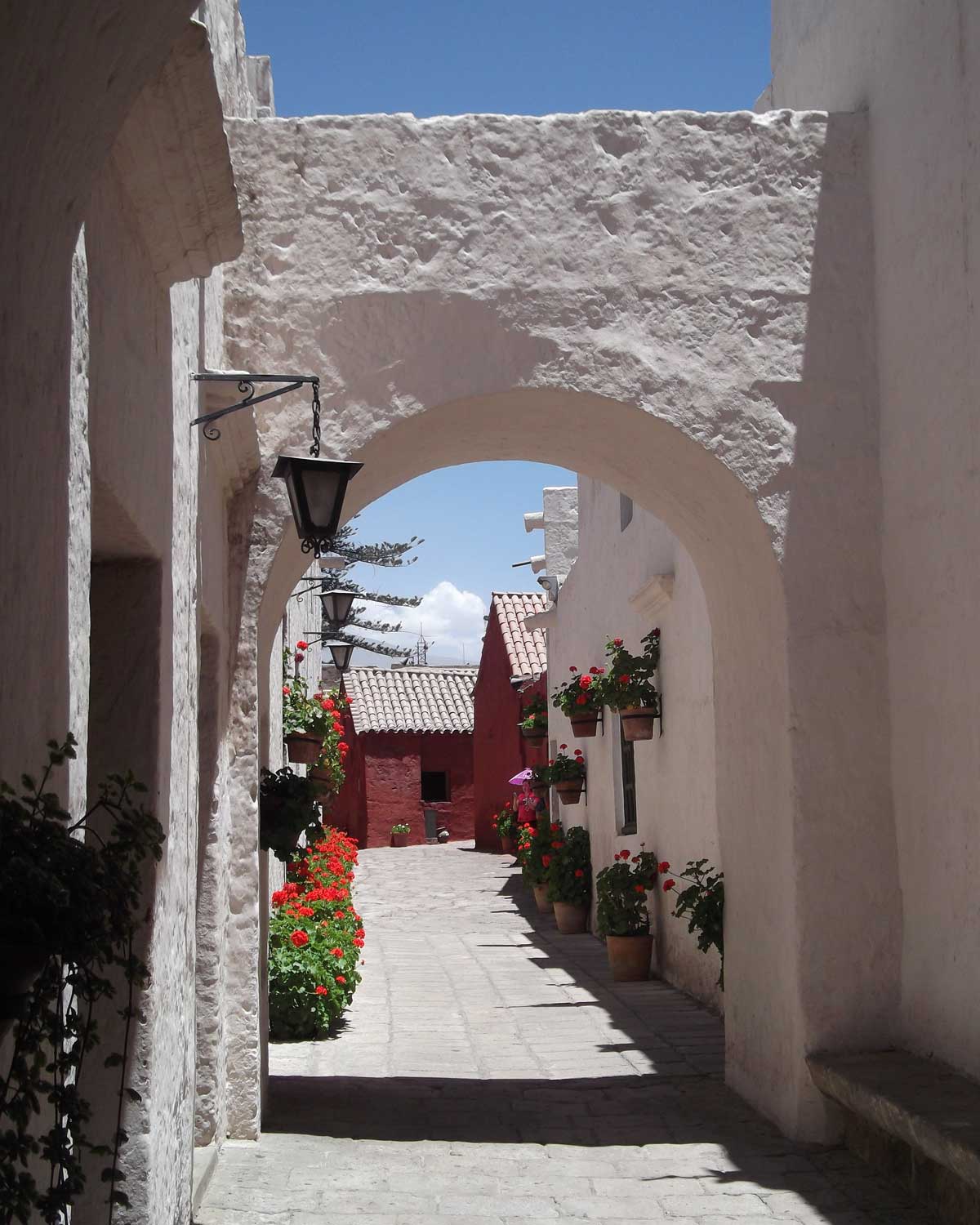
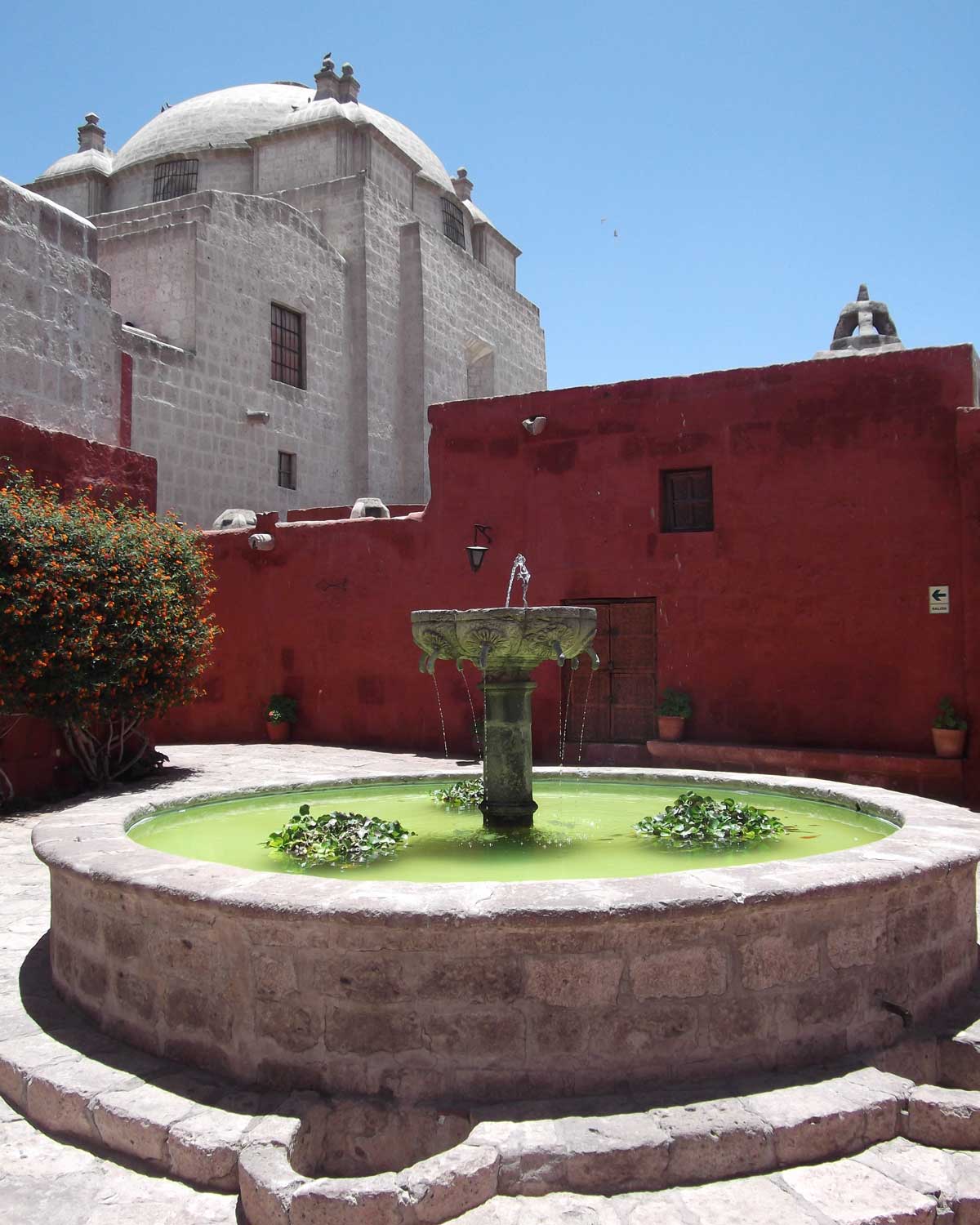
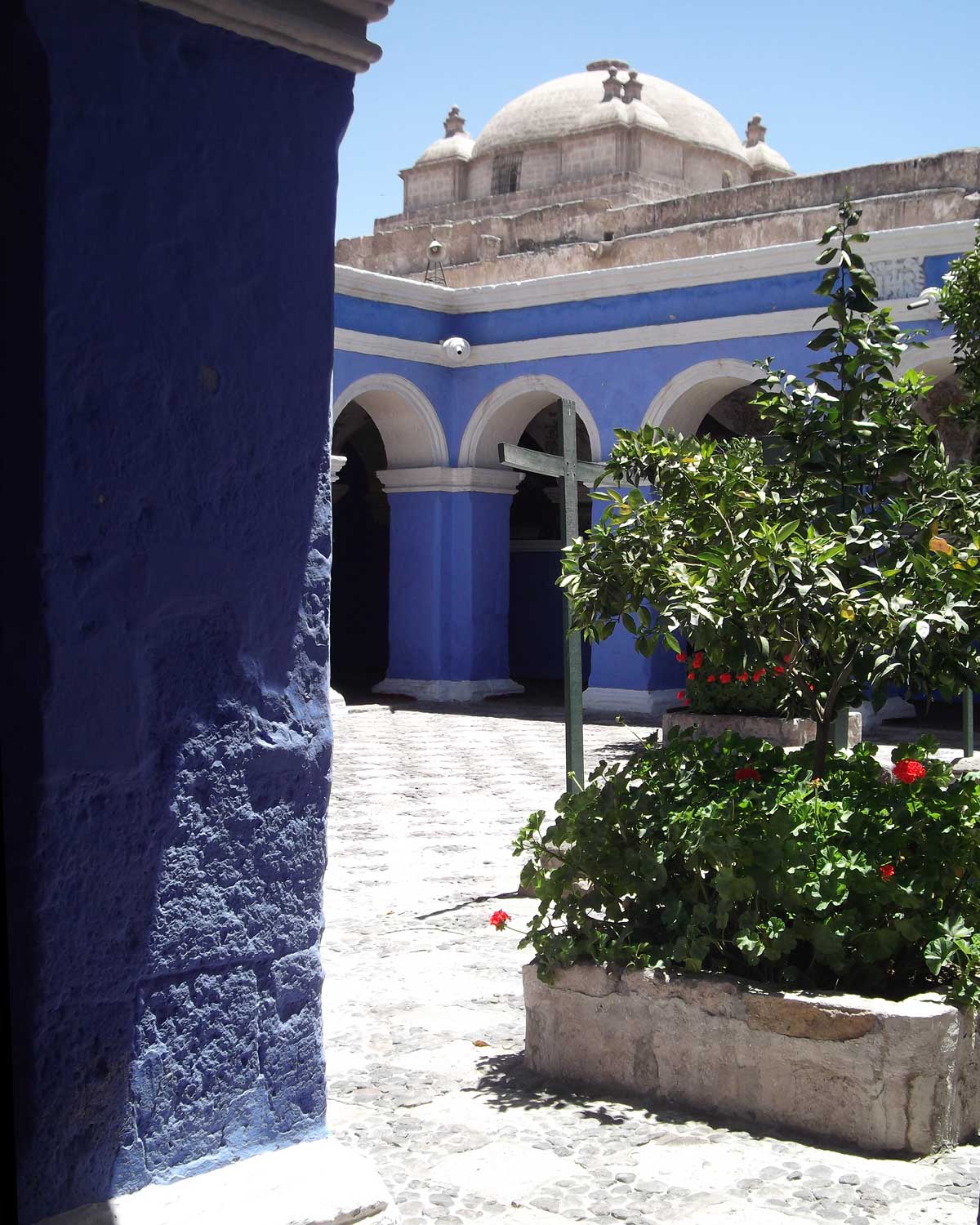
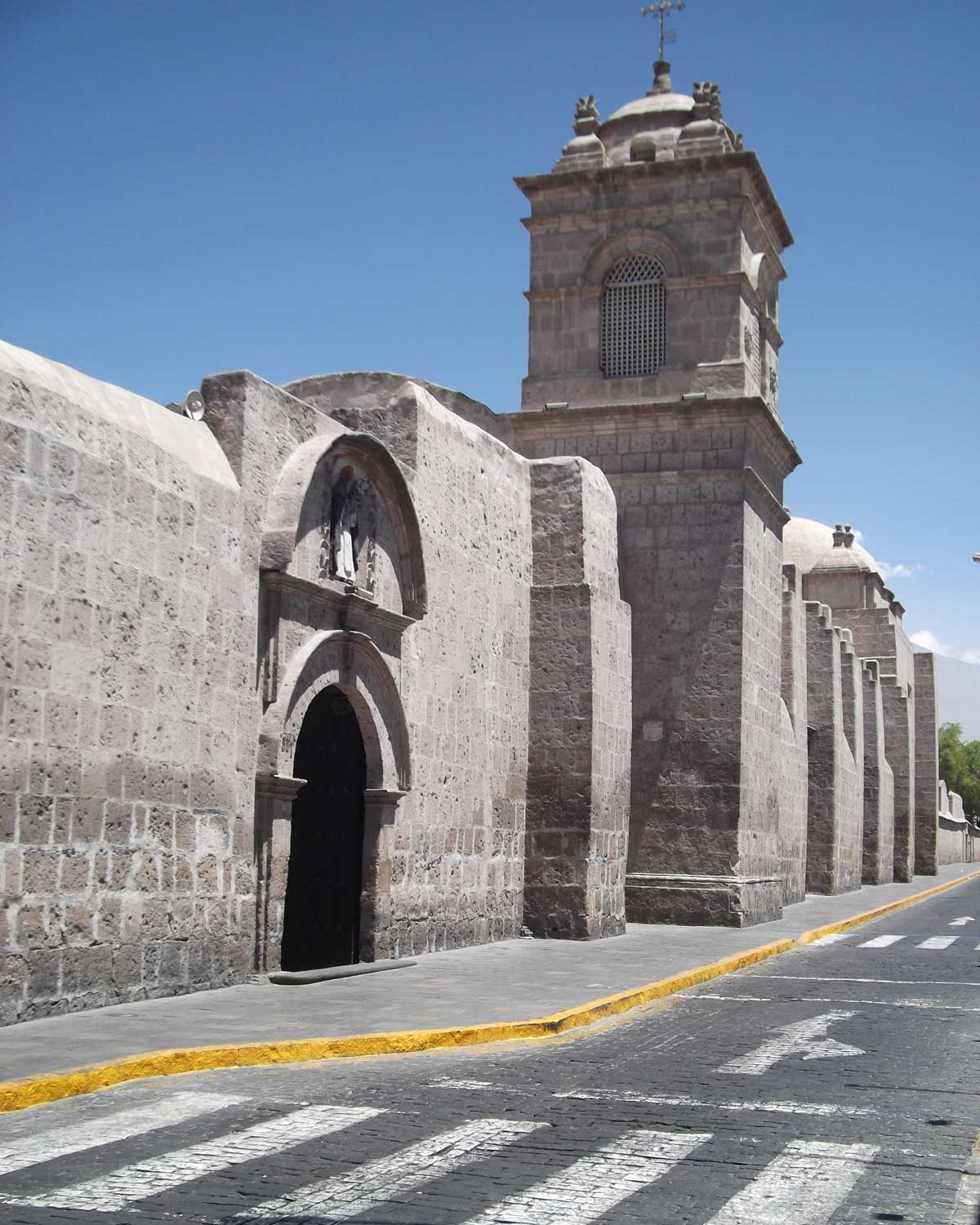
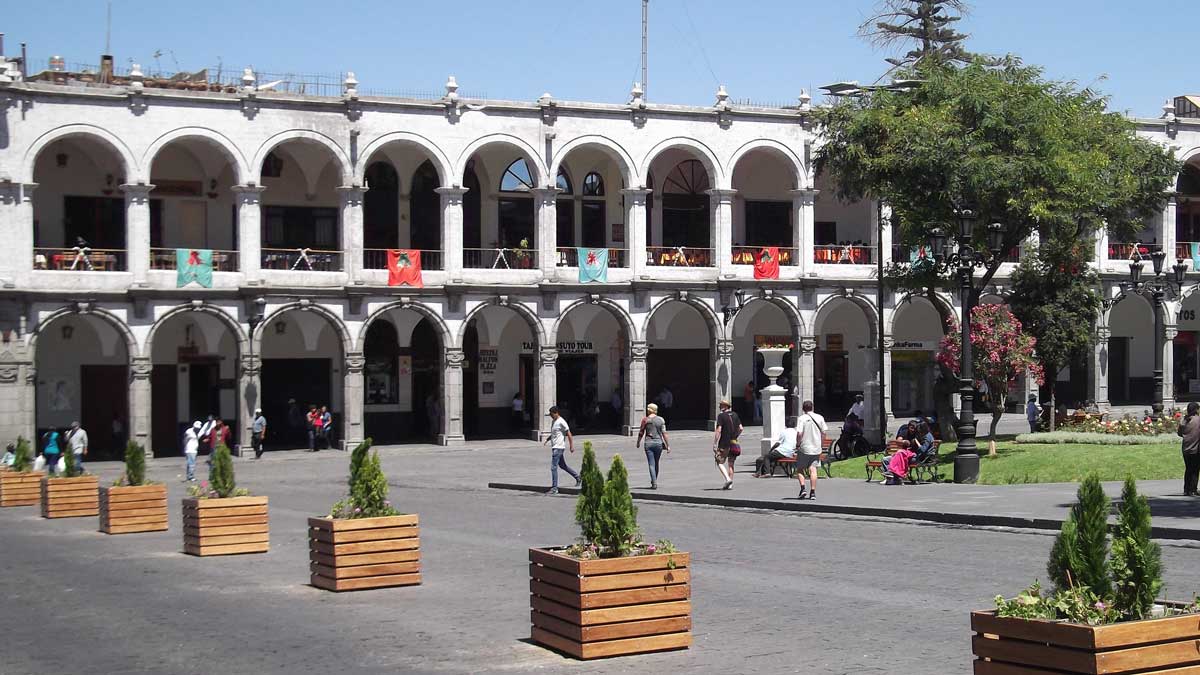
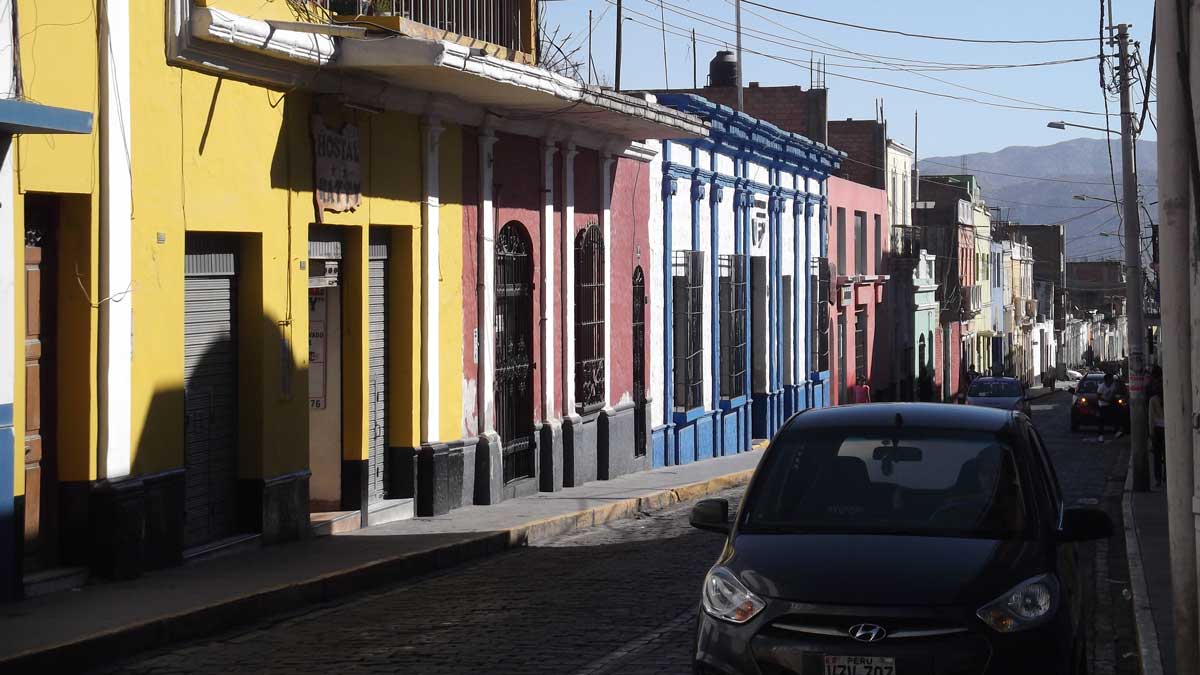
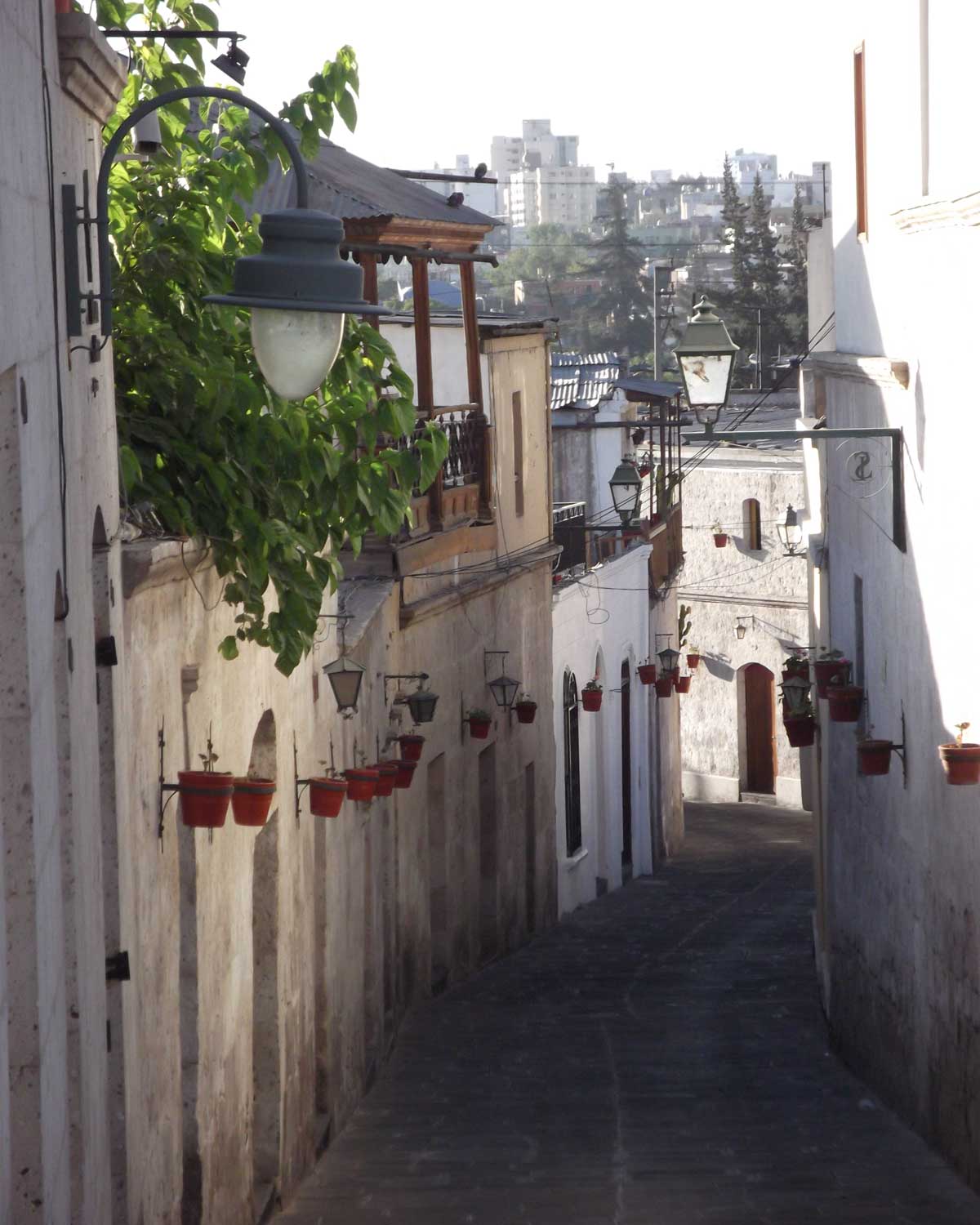

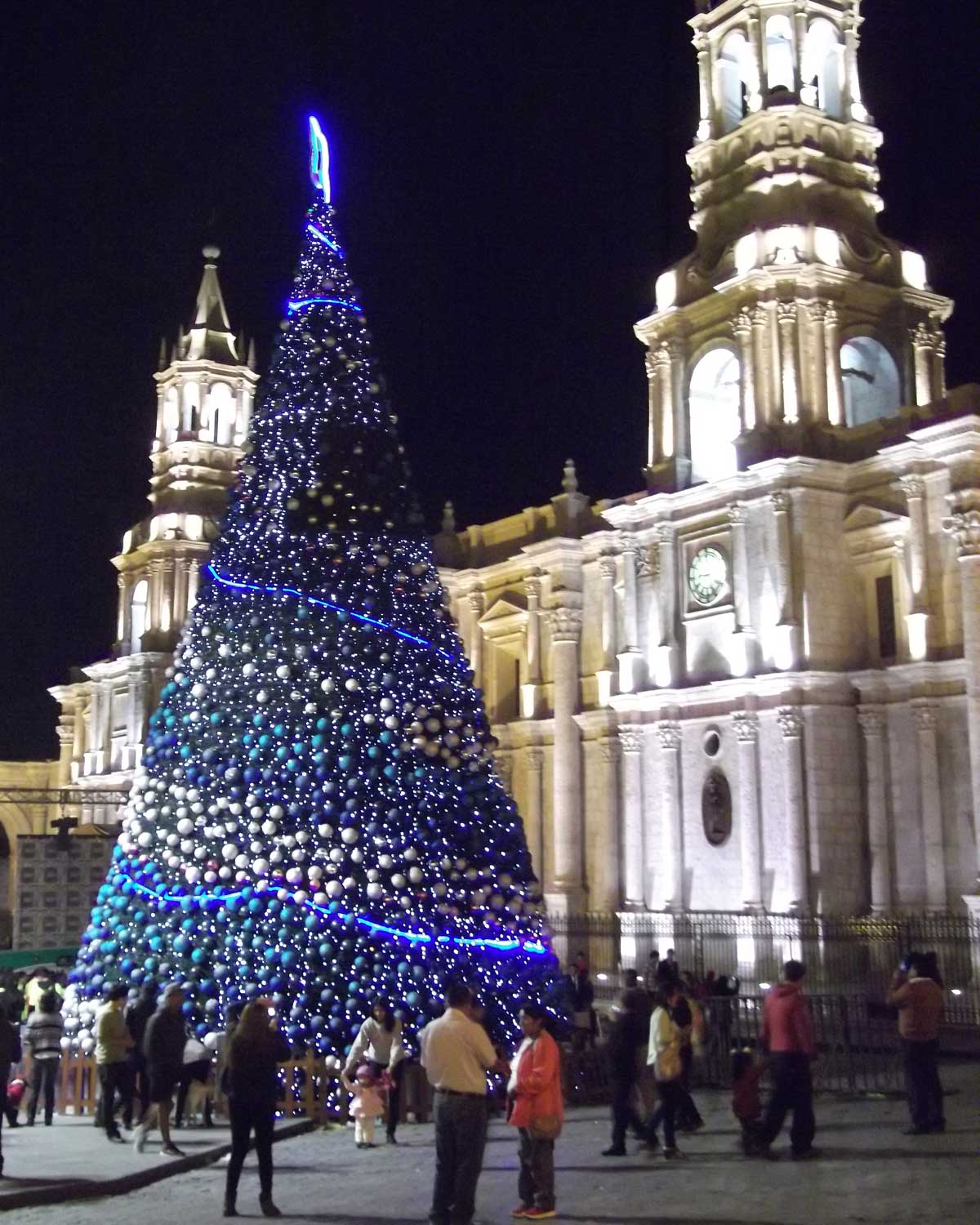









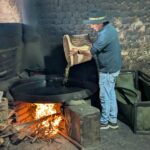


0 Comments